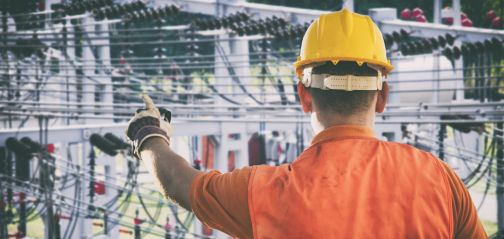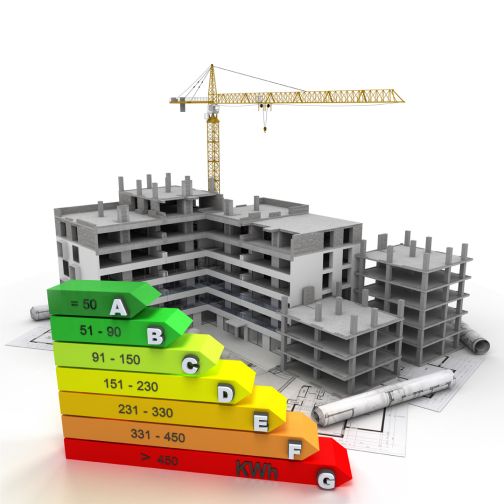Boris Johnson’s Ten Point Plan: Clean and green, but is it enough to support the decarbonisation of heat?

The Prime Minister’s new 10 point plan was launched last night (17th November 2020) and has already created a mixed response from industry. The plan sets out ten key areas for achieving the net-zero target and bringing about a green industrial revolution:
- Quadrupling offshore wind supply to 40 gigawatts by 2030
- Investing in low carbon hydrogen to produce a five gigawatts capacity by 2030
- Supporting nuclear power as a clean source of energy
- Phasing out new petrol and diesel cars and vans by 2030
- Investing in zero-emissions public transport and encouraging cycling and walking
- Supporting research into zero-emissions planes and ships
- Making homes and public buildings greener, warmer and more energy efficient
- Developing carbon capture storage (CCS) to capture and store 10 million tonnes of carbon dioxide by 2030
- Protecting and restoring the natural environment
- Encouraging innovation in low carbon technologies, making London the global centre of green finance
For those interested in building services and the way we heat our buildings, this is our first insight into how Government will fund the decarbonisation of heat, with a focus on electrification, to align with the direction of the Future Homes Standard and other updates to Approved Document L and Approved Document F.
Offshore wind: Increasing renewables in the grid
The plan to quadruple offshore wind capacity to power every home with an additional 40GW output by 2030 will help to support the decarbonisation of heat. By increasing the volume of renewable sources feeding into the grid, the carbon factor (CF) and primary energy factor (PEF) for electricity should fall even further than they already have.
When applied to SAP, this should increase the benefit of using electrical solutions when complying with both carbon and primary energy targets. Previous investment in decarbonising the grid has recently been reflected in SAP 10, with the BETA software released with the Future Homes Standard consultation (SAP 10.1) leaving no doubt that the shift to electrical specification is taking place.
The referenced media source is missing and needs to be re-embedded.
Figure 1: Changing carbon and primary energy factors within Sap 2010, SAP 10 and SAP 10.1
Although this investment helps strengthen the capacity of the grid, it will not be enough to solve the issue of increased demand on its own. Pure generation capacity is one factor, however manipulating demand so that it can be matched to these variable renewable sources is the key to unlocking clean energy. This will mean that we can electrify homes and vehicles to the total daily capacity of supply, rather than being limited by its variable peak. To do this smart thermal storage technology for water and space heating will be needed, such as high heat retention storage heating, alongside battery technology which is also listed in the Ten Point Plan, to provide a balancing mechanism - managed by a new flexible pricing structure within the energy market.

Hydrogen: Finding a low carbon source
There is no one silver bullet to decarbonising heat, and hydrogen will play a role in providing services to buildings in the UK. The Ten Point Plan aims to develop 5GW of low carbon hydrogen production by 2030 for use in industry, transport, power and regional homes. This is supported with £500 million of funding, £240 million of which will go into new hydrogen production facilities.
The rest of this funding will go towards hydrogen trials across the UK before 2030. Once of these will be a trial for homes using hydrogen for heating and cooking, starting with a Hydrogen Neighbourhood in 2023, moving on to become a Hydrogen Village by 2025 then to Hydrogen Town by the end of the decade. This will begin to see regionalisation of infrastructure appear across the UK, localised to generation capabilities.
The biggest challenge with hydrogen is producing a large, low carbon supply. The majority of today’s hydrogen supply comes from high carbon sources, which will not help the UK to meet the net-zero by 2050 goal. This investment will need to find a way of mass-producing hydrogen and transporting it safely in a low carbon, cost effective and sustainable way.
This could be achieved through a mixture of investment in CCS (to integrate hydrogen production with carbon capture and storage where high carbon fossil fuels are used, linked to point eight of the Ten Point Plan) and increasingly efficient and cost-effective ways of producing hydrogen via electrolysis and solar or biomass conversions.
Nuclear: Increasing electrical capacity
As expected, the new plan aims to invest £525 million in large and small-scale nuclear plants alongside research to develop new advanced modular reactors. Nuclear energy has been researched as a safe means of producing high capacity electricity in the UK, supported by both the Committee on Climate Change and the Government.
This investment, alongside the additional 40GW off shore wind, will help to secure electricity supply in the UK as we electrify heat in both new and existing buildings. This would increase capacity for the required uptake in heat pump technology and supporting flexible electrical solutions which industry is seeing become prioritised through changes in regulations.
However, for this investment to be a success, Government will need to address the stigma nuclear power has gained and ensure that the grid becomes flexible and responsive to facilitate the national transition to electrical generation and resulting solutions.

Greener homes: Decarbonising heat
Decarbonising heat is the one of the largest challenges the UK faces in reaching net-zero by 2050. The Ten Point Plan recognises this, offering £1 billion of funding during 2021 to make new and existing homes and public buildings more efficient. As part of this, the Green Homes Grant voucher scheme is being extended by a year and Government has set a target to install 600,000 heat pumps a year by 2028.
However, the road to decarbonisation is not as simple as extending a scheme and increasing heat pumps due to the skills gap and technical complexity of specification, especially when it comes to addressing the existing housing stock. This is where hybrid solutions are offering flexibility and a complementary solution on the journey to full decarbonisation. A hybrid solution does not just lend itself to a gas boiler and heat pump combination. Instead, this can be applied to any heating system which has a mix of technologies for hot water, space heating and cooling, if required.
In particular, developments in heat pump technology, such as hot water heat pumps, offer a low carbon solution for providing hot water, allowing for flexibility of specification for space heating. This solution is proving popular in new residential developments due to its performance in SAP and ability to help pass regional onsite regulations, such as aesthetics requirements on on-site renewable targets.
In order to solve the skills gap and create a more sustainable supply chain, this aims to create 50,000 green jobs by 2030. However, this does not solve the barriers to upskilling, such as expensive and complicated accreditation requirements. Although this clear commitment to increase low carbon solutions should encourage more to become certified in their installation, Government may need to subsidise or offer further incentives to ensure that sufficient, competent installers join the scheme to supply the expected demand.
Innovation is low carbon technologies
The last point given on Boris Johnson’s Ten Point Plan is to encourage investment in low carbon technologies. Although this hasn’t yet been supported through new funding, significant investment has been announced over the past year in this space, including £1 billion of investment for energy innovations that help to meet energy related targets.
As Government’s clear focus on low carbon solutions increase, confidence and market investment from manufacturers grows, introducing innovations in the market which can help building designers create increasingly efficient and effective buildings. Despite the call for innovation, many of the systems needed to meet the demands of these new markets are already available. For example, the Zeroth Energy System has contributed to successful sites where ambient networks are now part of a low carbon and innovative new approach to building design.
Making the most of decarbonisation
At GDHV, we pride ourselves in being leaders in sustainability and having a long-term outlook which helps you prepare the best HVAC strategy for your building. Our industry experts are on hand to present CPD’s or provide specification advice on making the most of electrical solutions.
For more information, book one of our CPDs online or requests a meeting with your regional HVAC specialist.








